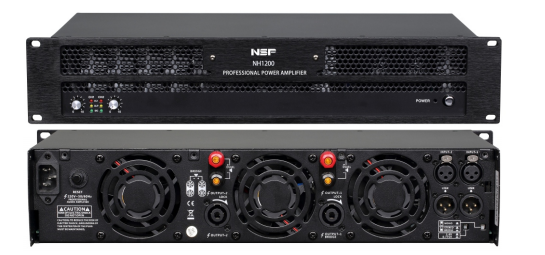How Does a Class D Amplifier Differ from Other Amplifier Types?
A Class D Amplifier is a highly efficient power amplifier known for its digital switching technology, which allows it to deliver superior power efficiency while maintaining high audio fidelity. Unlike traditional amplifier types, which use linear amplification methods, a Class D Amplifier operates through pulse-width modulation (PWM) or other switching techniques to convert input signals into amplified output with minimal energy loss. Understanding the key differences between a Class D Amplifier and other amplifier types can help in selecting the best option for various audio applications, from home audio systems to professional sound reinforcement.

Understanding the Basics of a Class D Amplifier
What Is a Class D Amplifier?
A Class D Amplifier is a type of power amplifier that uses high-speed electronic switches (such as MOSFETs) to rapidly turn the output transistors on and off, generating a pulse-width-modulated signal. This switching operation reduces heat dissipation and improves efficiency, making it a popular choice for portable and high-power audio applications.
How Does a Class D Amplifier Work?
Pulse-Width Modulation (PWM)
- Converts the input audio signal into a series of high-frequency pulses.
- Varies the width of these pulses to represent the amplitude of the original signal.
Switching Process
- Uses MOSFET transistors to rapidly switch between on and off states.
- Reduces power loss by ensuring transistors operate in their most efficient state.
Low-Pass Filtering
- Removes high-frequency switching noise from the output signal.
- Restores the analog waveform for clean and accurate sound reproduction.
Key Differences Between a Class D Amplifier and Other Amplifier Types
Efficiency and Power Consumption
Class D Amplifier: High Efficiency
- Typically achieves over 90% efficiency by minimizing power dissipation.
- Converts most of the input power into usable audio output.
Class A Amplifier: Low Efficiency
- Operates with a continuous current flow, resulting in significant heat production.
- Efficiency ranges between 20-30%, making it power-hungry and inefficient.
Class AB Amplifier: Moderate Efficiency
- Uses a combination of Class A and Class B topology to balance efficiency and performance.
- Efficiency is around 50-70%, but it still generates more heat than a Class D Amplifier.
Class B Amplifier: Higher Efficiency but More Distortion
- Offers up to 70% efficiency but introduces crossover distortion.
- Less common in high-fidelity applications compared to Class D Amplifier.
Audio Quality and Signal Purity
Class D Amplifier: Improved Sound Quality
- Modern Class D Amplifiers use advanced filtering and feedback techniques to reduce distortion.
- High-end models offer sound quality comparable to Class AB amplifiers.
Class A Amplifier: Best Sound Quality but Poor Efficiency
- Provides pure, linear amplification with minimal distortion.
- Commonly used in high-end audiophile systems despite high power consumption.
Class AB Amplifier: Balanced Sound Quality
- Reduces the distortion found in Class B while improving efficiency over Class A.
- Widely used in consumer and professional audio applications.
Class B Amplifier: Noticeable Distortion
- Introduces crossover distortion due to the push-pull design.
- Less preferred in high-fidelity applications.
Advantages of Using a Class D Amplifier
Energy Efficiency and Heat Dissipation
Consumes Less Power
- Ideal for battery-powered and portable audio systems.
- Reduces overall energy consumption in large-scale installations.
Produces Less Heat
- Requires smaller or no heat sinks, leading to a more compact design.
- Increases the amplifier’s lifespan by reducing thermal stress on components.
Compact and Lightweight Design
Smaller Footprint
- Class D Amplifiers are much smaller and lighter than their Class A or Class AB counterparts.
- Ideal for modern home theater systems, portable speakers, and car audio systems.
Integration with Digital Audio Systems
- Easily pairs with digital sources and DSP (Digital Signal Processing) technologies.
- Works efficiently with Bluetooth and wireless streaming systems.
Cost-Effectiveness
Lower Manufacturing Costs
- Requires fewer large components such as heat sinks and power supplies.
- More affordable than Class A amplifiers while maintaining good sound quality.
Longer Lifespan
- Less heat generation leads to improved durability and reliability.
- Reduces maintenance costs over time.
Potential Drawbacks of a Class D Amplifier
High-Frequency Noise and EMI
Electromagnetic Interference (EMI)
- The rapid switching process can generate high-frequency noise.
- Requires proper shielding and filtering to minimize interference.
Complex Filtering Requirements
- Requires sophisticated low-pass filters to remove switching noise.
- Poor-quality filters can negatively affect sound quality.
Sound Quality Limitations in Budget Models
Distortion in Lower-Quality Units
- Some budget Class D Amplifiers may suffer from non-linearities in their PWM process.
- High-end models address this issue with advanced digital correction techniques.
Latency Issues
- Some digital implementations introduce slight delays in audio processing.
- Not ideal for real-time audio applications such as live sound reinforcement.
Common Applications of Class D Amplifiers
Home Audio and Theater Systems
- Provides energy-efficient amplification for AV receivers and speaker systems.
- Delivers clear sound for music and movie playback.
Professional Sound Systems
- Used in concert sound systems, PA systems, and DJ setups.
- Offers high power output with minimal heat generation.
Automotive and Portable Audio
- Found in car audio systems, Bluetooth speakers, and battery-powered amplifiers.
- Maximizes battery life while maintaining high sound performance.
Musical Instrument Amplifiers
- Used in bass and guitar amplifiers for efficient power handling.
- Provides high output without excessive heat buildup.
Why Choose a Class D Amplifier?
A Class D Amplifier stands out from other amplifier types due to its high efficiency, compact size, and minimal heat dissipation. Compared to Class A, Class B, and Class AB amplifiers, it offers an excellent balance between power consumption and audio quality. While lower-end models may have minor drawbacks such as electromagnetic interference and filtering challenges, modern high-end Class D Amplifiers have significantly improved in sound performance.
If you need a powerful, energy-efficient amplifier for home audio, professional sound systems, or portable applications, a Class D Amplifier is an excellent choice. Its ability to deliver high-quality sound while consuming less power makes it the go-to option for modern audio setups.